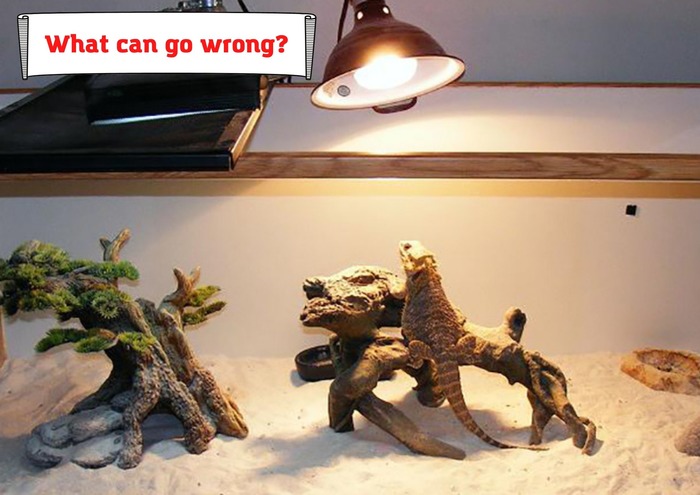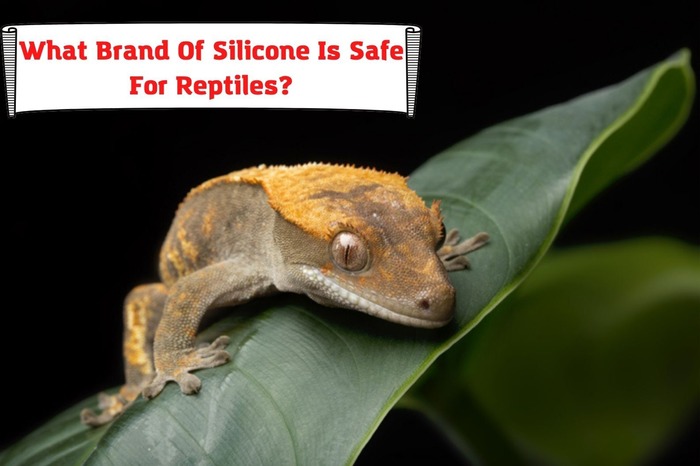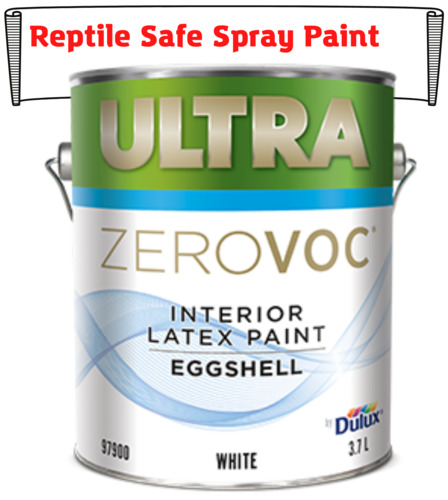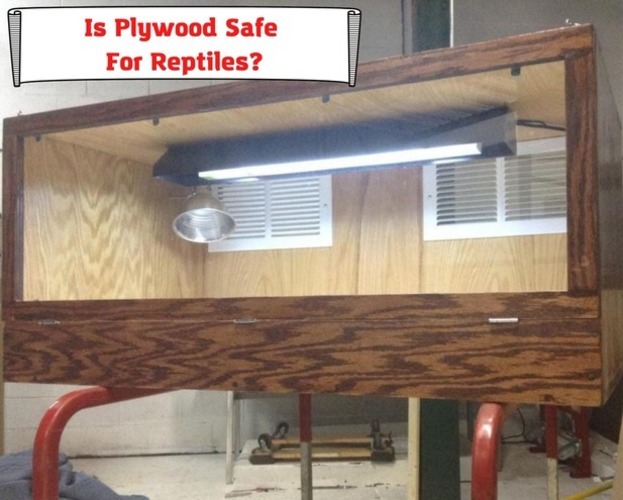
It could be frightening to notice that your heat lamp smells like burning. Have you ever wondered what causes the disturbing burn smells of your heat lamp?
This article presents a comprehensive explanation of that vital concern and what can go wrong with that burning smell.
This piece discusses
- heat lamps;
- what could have caused the burning smell;
- what can go wrong if you have that burning smell in your reptile enclosure;
- and what you can do.
HEAT LAMPS
Heat lamps are lights designed mainly to emit heat. They are also called infrared lights. The design is such that the glass container of the bulb is often painted to remove yellow light. The purpose of this is to allow the infrared light to pass through because it is the light that emits most of the heat.
Heat lamps are used for many things. But in reptile keeping, it is a great way to artificially create a light that mimics the sun in the natural habitats of these reptiles. They are a great way to provide heat and warmth needed by these ectothermic critters. These coldblooded animals can not carry out metabolic functions properly unless they maintain a particular body temperature. They rely on the sun or heat lamp as a heat source to do this.
HEAT LAMP SMELLS LIKE BURNING: PROBABLE REASONS?
If your heat lamp smells like burning, many things can go wrong. There are many likely reasons for this. But the most popular ones are discussed below.
Inferior Products
This is the most famous culprit for heat lamp fires. A typical heat lamp setup should consist of the accessories and the heat lamp. The accessories are the porcelain blast, the clamp, the hook, and a reflector dome. If any of these accessories have a slight defect, the results could be deadly.
Also, each piece of equipment could become weak over time of use. Electrical cords could wear. The copper wires that carry the currents inside could become exposed if they do. This exposure could often cause sparks that could be the culprit for the burning smell. Even a simple extension cord could overheat and catch fire.
Another dangerous possibility is when a wire frays internally and shortens out without tripping the breaker. The wires could melt, and the bulb could drop on the dry decorations in the enclosure or the beddings. This could surely lead to a fire.
Some heat lamps are produced with cages built around the bulb. This design protects the bulb from coming in contact with flammable material if it falls. But the truth is that if it falls on flammable material, it could lead to a fire because the reflector would be very hot.
Poor Connections to the Accessories
Poor connections to the fixtures could cause a burning smell. A standard for fixing heat lamps is to ensure that the wires are well connected at each end. Ensure that the wires going into the lamp and the plug are well connected and secure.
If the connections are poorly done, the electrified wires could spark for minutes internally, even burning and putting out that burning smell.
You can check for this by running your hands on the wires. Ensure that you wear safety gloves when you do this. It would also be best to check the connection points carefully. Secure them back in place if you see that they are not properly connected.
Unreliable Attachment Point for Hanging
Heat lamps are usually hung with a rope or a clamp over the heat zone in the enclosure. Some other enthusiasts like to have it installed on the enclosure right above the heat zone. Unreliable points of attachment could also be the culprit for that burning smell. If during the connections, any part of the attachment comes in contact with the reflector, you would get that burning smell.
Cheap Construction
Cheap construction could cause that burning smell. It would be best to fix them at a fine distance from the bedding when fixing heat lamps.
Screws could come loose with cheap construction, sending hot materials crashing on the dry beddings. Most bedding materials are super flammable.
Also, if you put water in the tank, always put the water at a different corner of the enclosure. If you put water in the corner of the heat lamp and the power outlet, that could be fatal.
In repairing a faulty part of the enclosure, using make-shift materials for too long could also be the reason for the burning smell. Covering the heat lamp with flammable material, allowing a flammable material to come in contact with the reflector of the heat lamp, or even covering frayed wires with substandard electrical materials could cause the burning smell.
Finally, the electric plugs are also a possible cause of the burning smell. Using a socket with a lower or higher capacity for the plug could burn the heat lamp plugs. It could also melt it in. Apart from the risk of a fire accident and violent sparks, it will cause a burning smell that would make your reptile uncomfortable.
WHAT CAN GO WRONG?

The likely results of a heat lamp that smells like burning will surely not be good for the reptile’s health. This is especially so because they stay in an enclosure and not free open space. Some of the likely results are discussed below;
Electrocution risk
If your heat lamp smells like burning, it means something is not right. Either the wires are frayed, and the coppers are exposed, or any other frightening probabilities. If the wires frayed, your reptiles are at the risk of electrocution.
Fire Accident
A heat lamp that smells like burning has probably started a fire if it is not about to start. To put things in perspective, you must always remember that your heat lamps are infrared lamps that give off a magnitude of heat than other bulbs. In simple English, this means heat lamps are very hot.
A typical 100-Watt incandescent bulb has a radiating surface temperature of about 250°F. This is what heats the surrounding part of the enclosure over time. The higher the watt rating, the faster it heats up. This means a high chance of ignition if the heat lamp comes in contact with flammable material.
Reptile enclosures are usually filled with flammable materials and oxygen. Suppose the reflector or any other hot part of the heat bulb comes in contact with the pine shavings, dry paper towels, or other flammable material in the enclosure. In that case, a fire accident could be inevitable. Sparks from exposed wires coming in contact with the flammable bedding sheets can also start a fire.
But if you use the heat lamp properly, observe the necessary safety precautions, and avoid using inferior products and poorly made repair accessories, it’ll serve you well.
Fire accidents must be avoided at all costs. The scales of your reptile do more than cover its delicate organs. It protects the critter from infections. If your reptile suffers burns, that part of the skin becomes vulnerable to infections. This means your reptile is left at the risk of bacterial and fungal infections. Apart from these, your reptile would have suffered enormous liquid loss from the burn, which will lead to dehydration.
In any case, a heat lamp that smells like burning must be thoroughly inspected to prevent all these bad results.
Health risk
If your heat lamp smells like burning, that could be the beginning of many health risks. If you do not control it in time, the smell could lead to breathing problems in the enclosure. Your reptile could suffocate from lack of adequate oxygen in the enclosure due to the chemical irritation.
If the cause of the smell generates smoke, your reptile could die due to asphyxiation even before the fire. Asphyxiation, in laymen’s terms, is a lack of oxygen. If death happens to be too remote, irritation from the smoke may be caused. This could also put the reptile under stress as they may instinctively injure themselves in the attempt to escape the enclosure since they sense danger.
WHAT CAN YOU DO?
There is a lot you can do to avoid this problem of heat lamps smelling like burning. But the most important are:
- Choosing heat lamp equipment with durable accessories
- Using the best construction equipment to build the enclosure
- Using the best repair accessories for quick fixes
- Ensuring that temporary fixtures are replaced before they wear out
- Using reliable fixtures
- Using the correct sockets for the suitable heat lamp plugs
- Covering frayed wires with the right electrical rapes or replacing the worn-out wires with the appropriate replacement
- General maintenance routine to prevent the problem before they happen
CONCLUSION
Heat lamps that smell like burning are a warning sign of a disaster. If you suspect that the heat lamp is emitting a burning smell, it would be best not to shrug it off as nothing. That burning smell could lead to undesirable results. It would be best to trace the source of the smell, understand the cause and correct the problem as soon as possible.
- Dubia Roach Egg Sack: How To Understand if It’s Healthy? - January 2, 2023
- How To Feed African Dwarf Frog While on Vacation? - December 26, 2022
- Baytril for Bearded Dragon: Here’s What You Should Know - December 19, 2022



